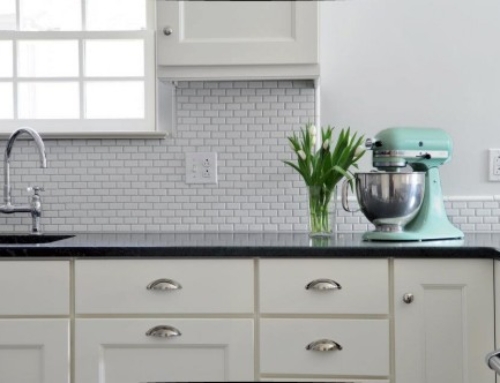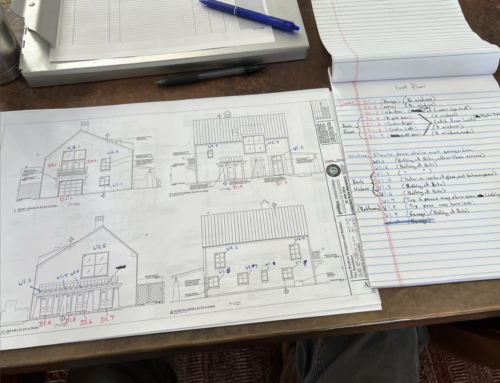Phases of the Typical Home Interior Renovation
Design/Planning Phase –
This is an often overlooked, but very important, phase of any home renovation or repair project. Even if your project is as simple as hanging a door or painting a room, you need to start with a plan if you want to stay focused, do a good job, and get the project done.
With complicated projects like kitchens and baths, this is even more true. On many home shows, you’ll see designers and developers jump into a project with nothing more than a cabinet layout. They might walk around and talk about where they think they want some lights, doors and windows to go. That’s not a plan. It won’t tell the electrician or plumbers or carpenters where things are supposed to go, what is staying, and what is being demolished. You won’t know what the project will cost. Without a complete set of plans, you can’t get a construction permit, so your project may be worth less when you go to resell or refinance. Without a complete set of drawings, mistakes will be made, so you may end up paying even more to correct the mistakes made.
Typically, planning one of our bathrooms or kitchens will take a few weeks. This includes the time to create a layout and select products with the clients. Given carte blanche, our designer can reduce this time significantly, but few clients want to be left out of the planning phase.
Construction Phase
1. Set up/Start/Scheduling/Orders/Permits – For most of our projects, this phase takes 2-3 weeks. Most of this work takes place in the office. During this time, we create the project books that fully specify the project. Those take 40+ hours to create, on average.
2. Protection/Demolition – Often, we will be on the job site while item #1 for that project is underway at our office. We begin on site with protecting work areas with plastic walls, protecting floors with paper under plywood, getting a dumpster on site, and collecting needed materials and tools. No one likes the demolition phase. It’s stressful and messy.
3. Rough Framing – Once everything is demolished and cleaned out, we start building the project.
4. Inspections – Often, the inspectors will want to see any framing we do, especially structural framing work, whether it’s wooden or steel.
5. Rough Ins – Once the framing is in, all the pipes, ducts, and wires get run. This can take a bit of time since so many specialists will be in the same space. Everyone is jockeying for space and time to get their runs in first. If one pro is late, the others can be inconvenienced. Sometimes subcontractors will come in on a weekend, which helps a lot with time management.
6. Inspections – During this period, the various subs have their own inspectors come in, and then the city inspector comes in to confirm everything is properly done, inspected and approved before we close up the walls. Skipping permits means your project isn’t done to code. It’s not safe. It’s not worth what you paid for it. Never skip on permits. It can easily take a whole week to get everyone’s inspectors in if it’s the busy season.
7. Insulation/Air Sealing – Once inspected, we do air sealing and insulation. We do this after inspection so the rough in work can be viewed easily by our inspectors. In some districts, insulation has its own inspection phase.
8. Closing Walls (Drywall Install and Finishing) – Many homeowners get very excited during this phase of their project because they can see how things will look when done. Unfortunately, this is also usually the dustiest and most frustrating time for the homeowners. Usually, they feel things slow down after this phase.
9. Finishes (Tile/Paint/Flooring) – These sections of work make homeowners happy, but they take time to do properly. Sometimes, all the subs involved in this phase are working at the same time overlapping a bit. That’s because they all want to do a good job, and time is money.
10. Cabinets/Millwork/Doors/Windows – Another happy time for customers. Typically, kitchen components take about a week to install when we count cabinet trims. It’s very fussy work and not a good time for homeowners to observe since the crew really needs to concentrate on the details.
11. Counters – We typically have the stone people in to template the counters as soon as base cabinets are installed. Usual turnaround time for stone is 2-3 weeks. Customers get very anxious during this time because they want to see their finished room and don’t understand why this phase takes that long. Understand that these pros need to make precision cuts in hundreds of pounds of expensive stone slabs, then polish, deliver and install it. (Note: The cut-outs are not yours to keep. This is a common customer question.)
12. Trim Out (Plumbing and Electrical Fixtures) – At this point, the HVAC, electricians and plumbers have to come back to install their fixtures and plates. We insist that they have clean hands when doing so. Once these things are in, your room is functional but not yet move-in ready.
13. Substantial Functionality – Now, your space is working as intended, but we still need to finish some small touchups or details like knobs. This is also the period in which we collect a check for most of the balance of a project.
14. Punch List Meeting – This is the meeting where homeowners and the project manager get together to agree on what remains to be finished. I like to schedule these meetings 2 weeks before the project is done. At our company, we ask homeowners to sign the list we all agree to. Then, we close out that list as fast as we can so we can get to our next project and leave the homeowners on this project with a completed project to enjoy. We’ve learned to do this over the many years we have been in business, because it avoids the possibility of confusion when the job is complete.
15. Touchups (Clean/Move Out) – Finally, we do any touchups or cleaning that remains. If we are not painting, we leave the place broom swept. If we are painting, we wash floors and polish things as we paint, then pack up our stuff and move out. Any dumpsters or portable bathroom facilities in place are removed. Usually, the homeowners are anxious that we are leaving so we need to assure them we are only a telephone call away. We usually call in a couple of weeks to check on things and make sure there are no questions, and customers typically really appreciate this courtesy.





